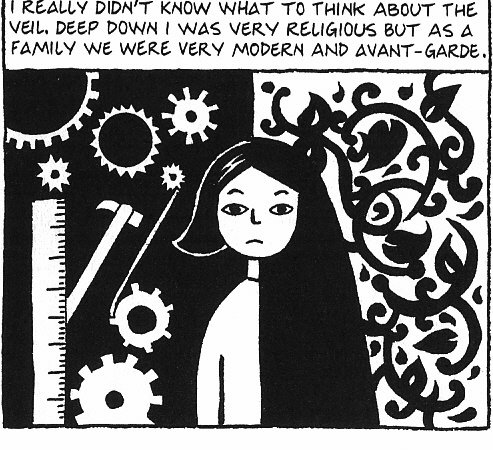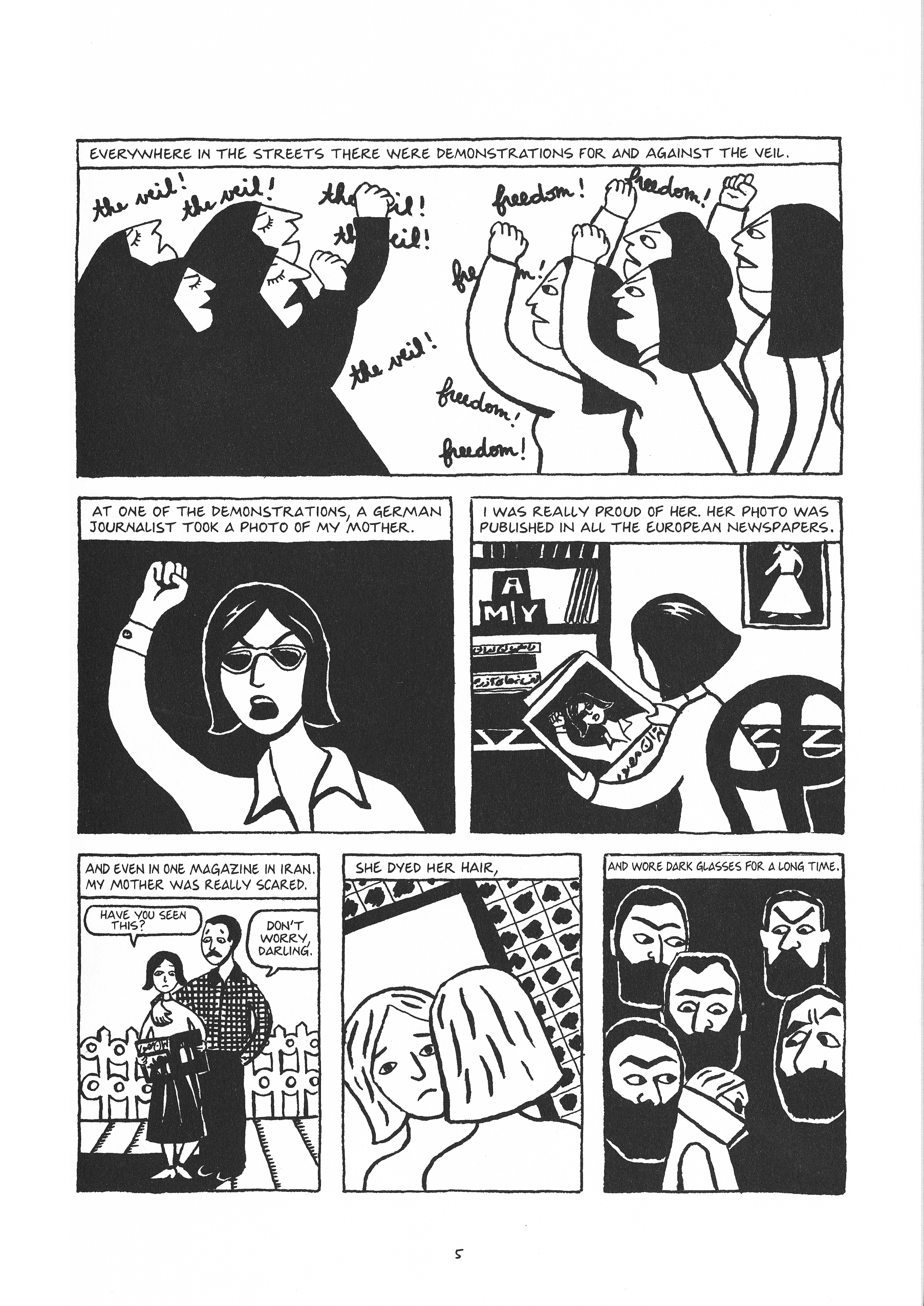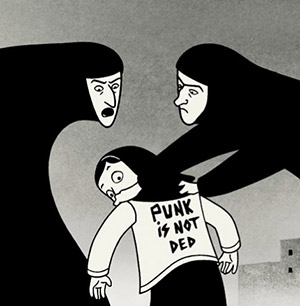Persepolis
While there’s plenty of graphic novels that I haven’t read, I like to think that over the course of my weekly ramblings about them, I’ve come to read a fairly decent range of stories. There have been stories that I’ve fallen in love with, stories that I despised with all the burning hatred in my black little heart and pretty much the entire range in between. But I think there are very few stories that have affected me quite like Persepolis. It’s rare to see a graphic novel make history and memoir interesting without resorting to gore and intense action but Persepolis has a strange intensity to it despite its often lighter tones. Persepolis is Marjane Satrapi’s story of growing up during the Cultural Revolution in Iran, as seen through the eyes of first a child, then a teenager. As a history geek and a lover of stories, Persepolis really hits the mark in both and yet gives those of us with perhaps only a very light knowledge of the subject an understanding of what it was like at least in one particular case. It’s an interesting blend of history and drama that is surprisingly heart rending. The original Persepolis was written in 2000 with the sequel following in 2001. Both were written and illustrated by Marjane Satrapi though I’ll be focusing largely on the first one in this review.
During the course of the story in Persepolis, Satrapi tells of her life in Iran from age six to age fourteen. Satrapi’s parents are not hugely wealthy, but certainly upper middle class, well-educated and not afraid to voice their political opinions. At least at first. Satrapi’s view of the Islamic Revolution is as interesting as it is because you see from the intellectual elite’s perspective how Iranian culture changes over the course of the revolution. Little by little freedoms are worn away and people live in fear more and more, even as they engage in their own little acts of rebellion. Reading the story as an adult, it’s somewhat scary to see through child-Marjane’s eyes and recognize the increasing danger for a young girl as rebellious and outspoken as she paints herself to be. Neither side is glorified, but rather the gradual erosion of the non-Islamic parts of Iranian culture reveal a rather huge loss to the country as a whole and the deep effect it has on Satrapi and those around her. The story ends with Satrapi’s departure from Iran at age fourteen and picks back up in the second volume which deals with the years following and her struggle to find a way to fit in as an outsider. As far as immigrant, coming of age stories go, it’s hard to get much more intense than that.
What seems to make Persepolis stand out from other similar stories is two-fold: the understanding and insight it gives readers into the minds of an average (although admittedly higher class) Iranian’s experience of the Islamic Revolution and the way in which the art directly complements the tone of the story. Satrapi has an almost self-deprecating view of herself as a child, particularly in the overtly rebellious tendencies displayed in the midst of a crackdown that had no tolerance for rebellion. Satrapi runs into some rather scary situations and it’s difficult to imagine what might have happened to her had her parents not gotten her out before her unruly tongue got her into serious trouble. Overall, I think Satrapi has a very good understanding of people and the ways in which they come to understand situations outside of their control. Persepolis can be disturbing in that there’s not a sudden shift from freedom to burkas but a smooth slide from public discontent to religious fervor. It is distinctly scary at points and that’s part of what makes it such a memorable story. The art is uncomplicated and stark, with very little color used in the panels. Satrapi uses shadow to great effect to create a mood that alternates between the silliness of her family and the terrifying reality of the threat of religious fanatics. The art style is distinctly cartoony but it seems to underscore the implied violence and threat that Satrapi and her family face as the revolution passes year by year.
While I understand that not everyone enjoys history and stories as much as I do, Persepolis is one of those stories that absolutely has to be on every “Must-Read Comics/Graphic Novels!” list. If it’s not on there, that list isn’t worth a damn. That’s not opinion, that’s fact. Persepolis is a powerhouse of a story that belongs on that list next to Maus. They’re both the kind of story that you want to shove into the hands of every teen who’s ever said “history is too boring!” It’s a well-written, very well illustrated journey of a young girl growing up in incredibly dangerous times who has to navigate not only normal teen life but a whole host of other problems many of us have never experienced. I honestly cannot recommend it highly enough.
-Cait



